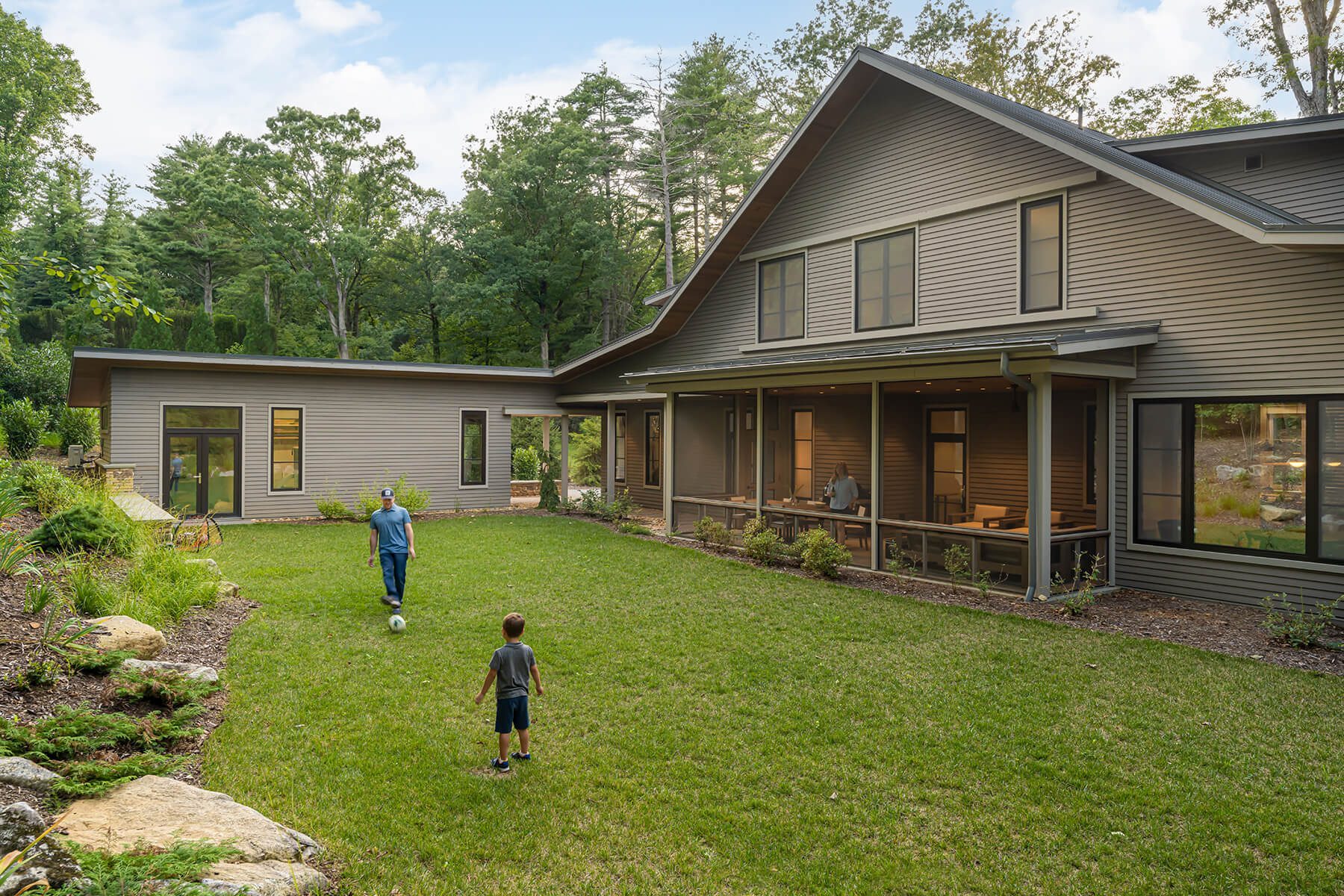
Cedarcliff Residence
Location: Biltmore Forest, NC
Type: New Construction
The Cedarcliff Residence is the first LEED certified home in Biltmore Forest – a prominent Asheville neighborhood known for stately homes and tree-lined streets. Energy efficiency was paramount to the owners as well as keeping the home in the style of the neighborhood. The result is a modern transitional home that showcases that new construction and sustainable strategies can blend seamlessly into established neighborhoods.
Sustainable Highlights
- LEED Silver – the first LEED Certified home in Biltmore Forest
- 10.5 kW Solar array provides 80% of home’s net energy usage
- High-efficiency geothermal heating and cooling
- Constructed with continuous exterior rigid insulation for an above-code thermal envelope
Project Team
Builder: Jade Mountain Builders
Landscape: Osgood Landscape Architecture
Photographer: Ryan Theede
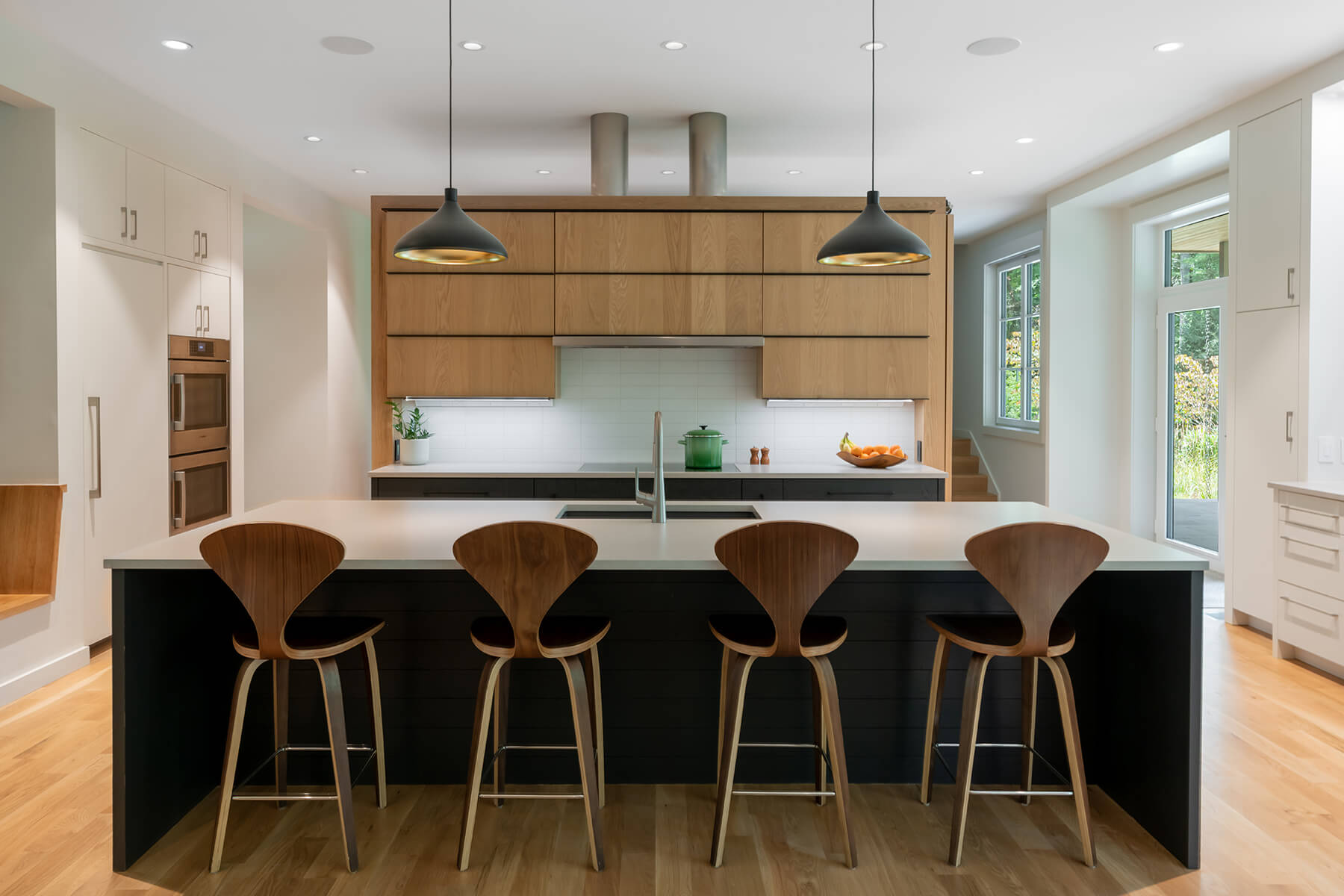
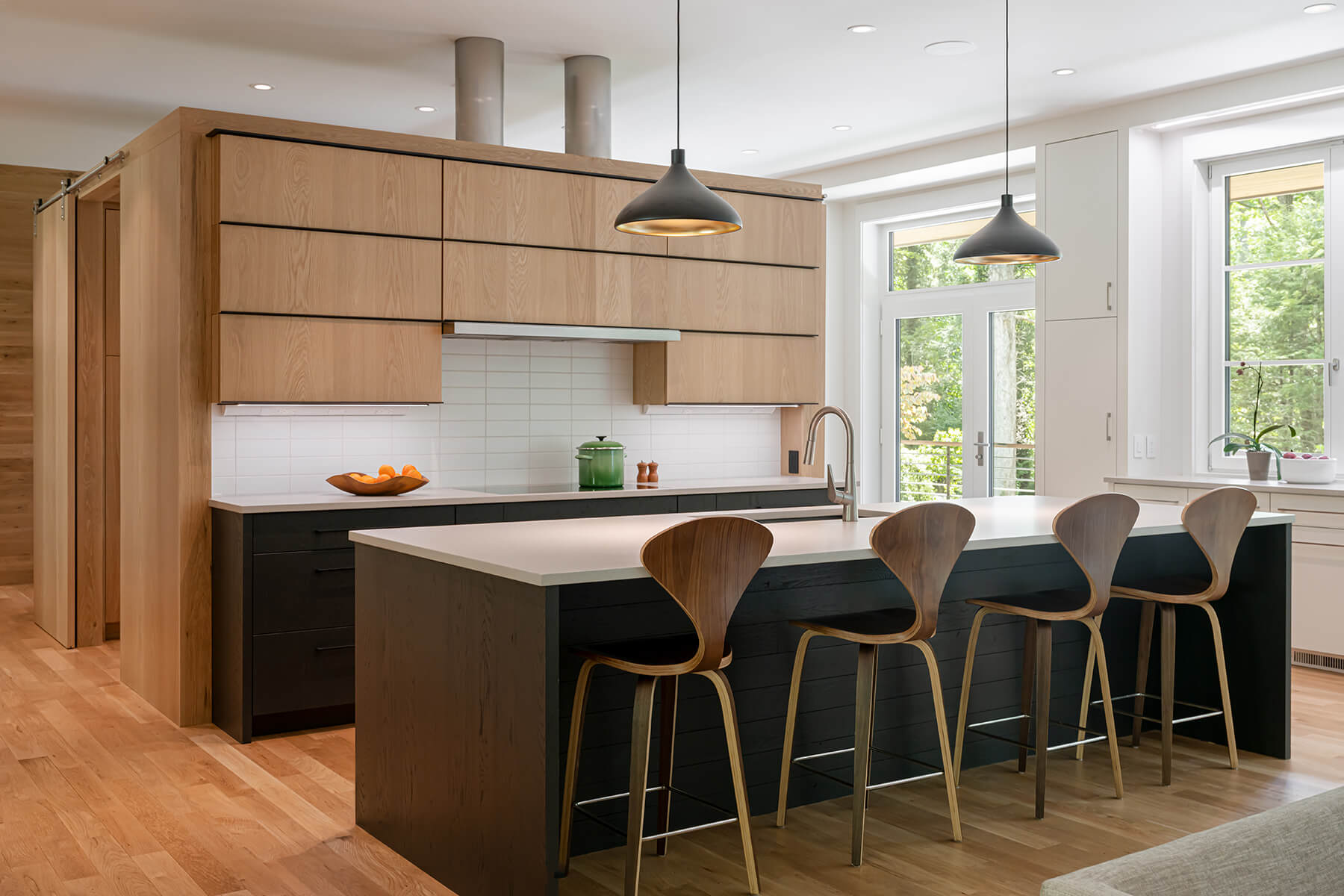
Our clients are a young family of five who purchased this property with an existing home. This house was in complete disrepair and had significant mold issues. These challenges led us to rebuild rather than undertake the gut renovation that would be needed to bring the existing structure up to their family’s long-term needs. Starting fresh gave us and the owners – who are both engineers with a keen interest in innovative building technology – an opportunity to champion the sustainability goals, starting early in the project. The Cedarcliff Residence is now LEED Silver certified – a first for Biltmore Forest.
The design of this house is based around the evolution of their family. Our client’s family went from 2 to 5 during the design and build process. Knowing this would be their forever home, we made sure it would work for their growing needs. The house holds two owner suites. One is on the upper level where the parents can be close to their young children. As the kids get older, they can move downstairs and the upper level suite can be used for guests. Upstairs also holds two play rooms that can be turned into studies in the future.
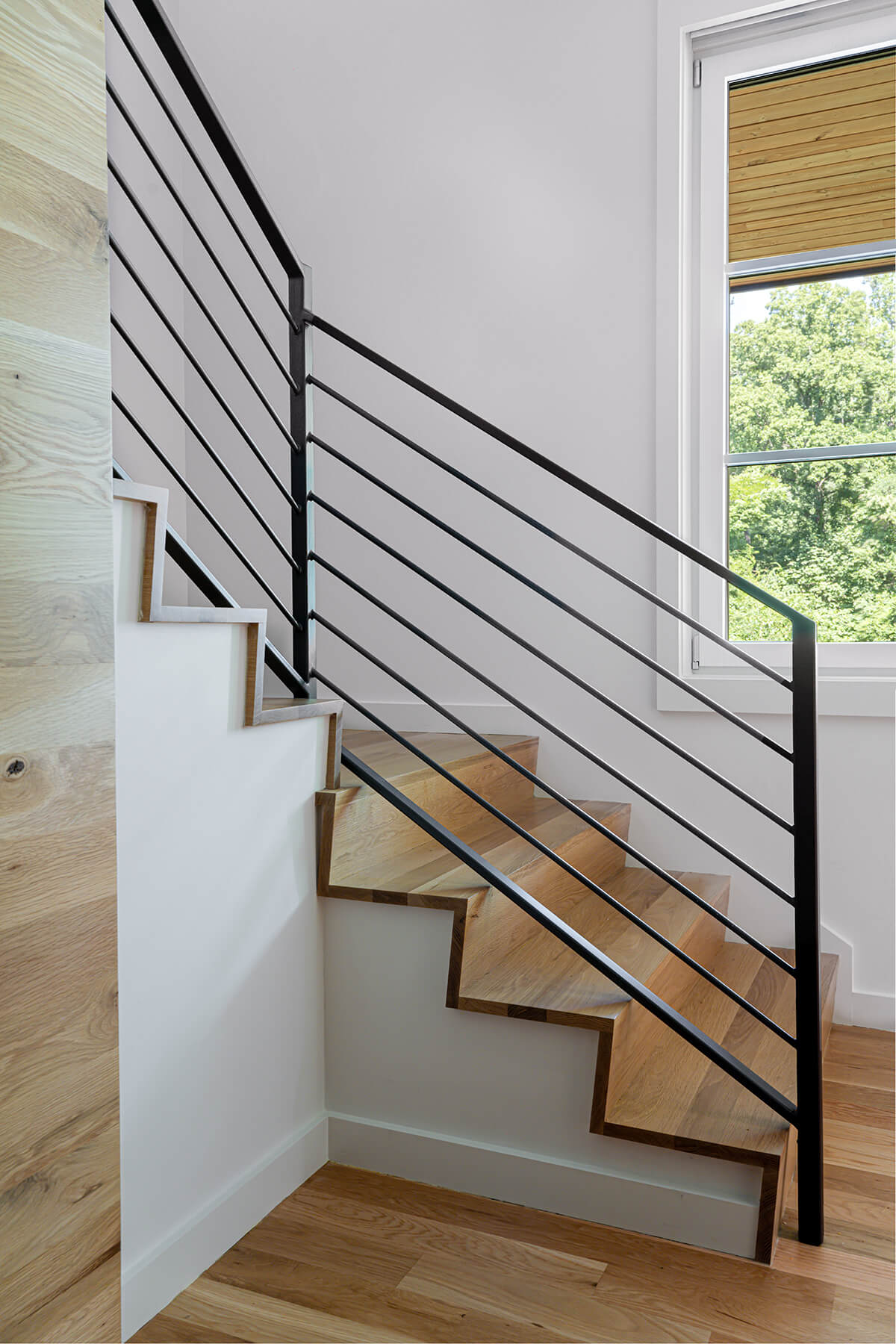
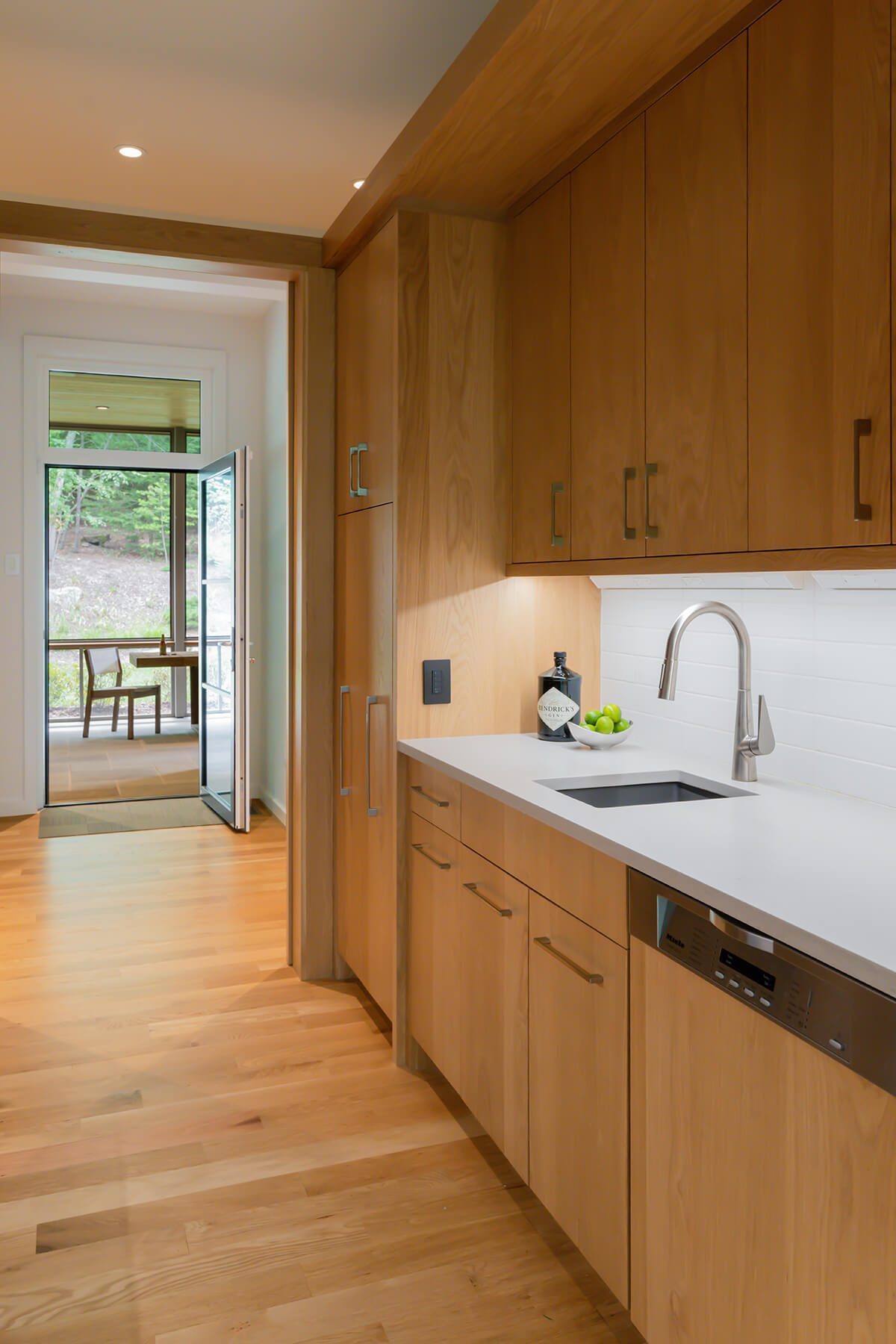

Inside, the main interior space has a lot of interesting points. The great room holds living, dining and kitchen spaces that can all be used individually but have a lot of adaptability in their use. The kitchen is butted against an enclosed pantry that can be closed off. This floating pantry is an anchor to the great room but also provides necessary practical space and storage. Here grocery bags can be dropped and countertop appliances and clutter can be hidden away.
The owners always wanted a breakfast booth in addition to a formal dining room big enough to accommodate their huge family. Tucked to the side of the great room is a breakfast nook that can be used informally for breakfast, homework or game nights. In the space beside the nook is a formal dining room that can be separated from the living room by a large slatted screen door. The slatted door allows light to enter into the living room but keeps the spaces separated. This screen can be unbolted and slid away so the dining table can expand into the living room to host their large family for gatherings.
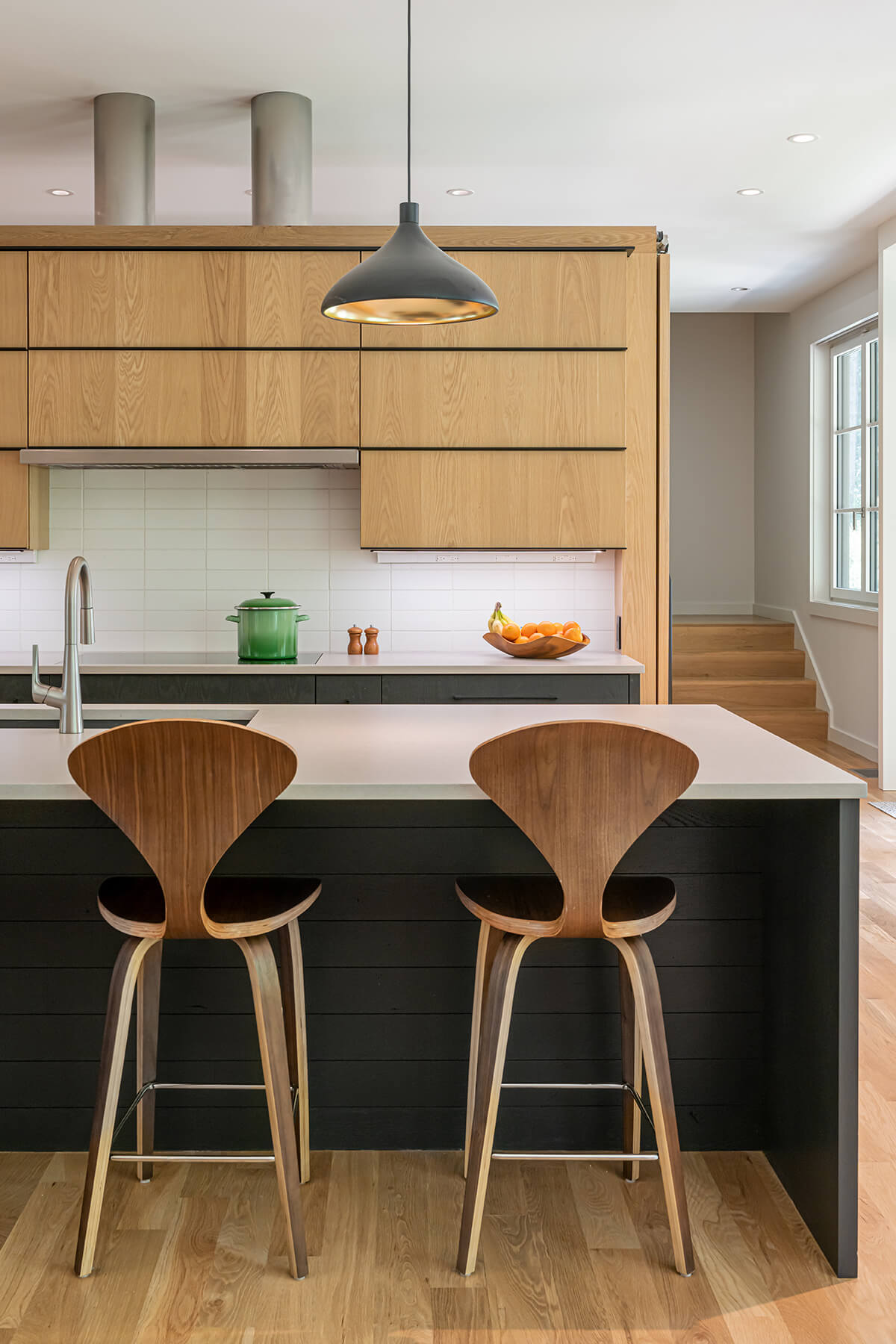
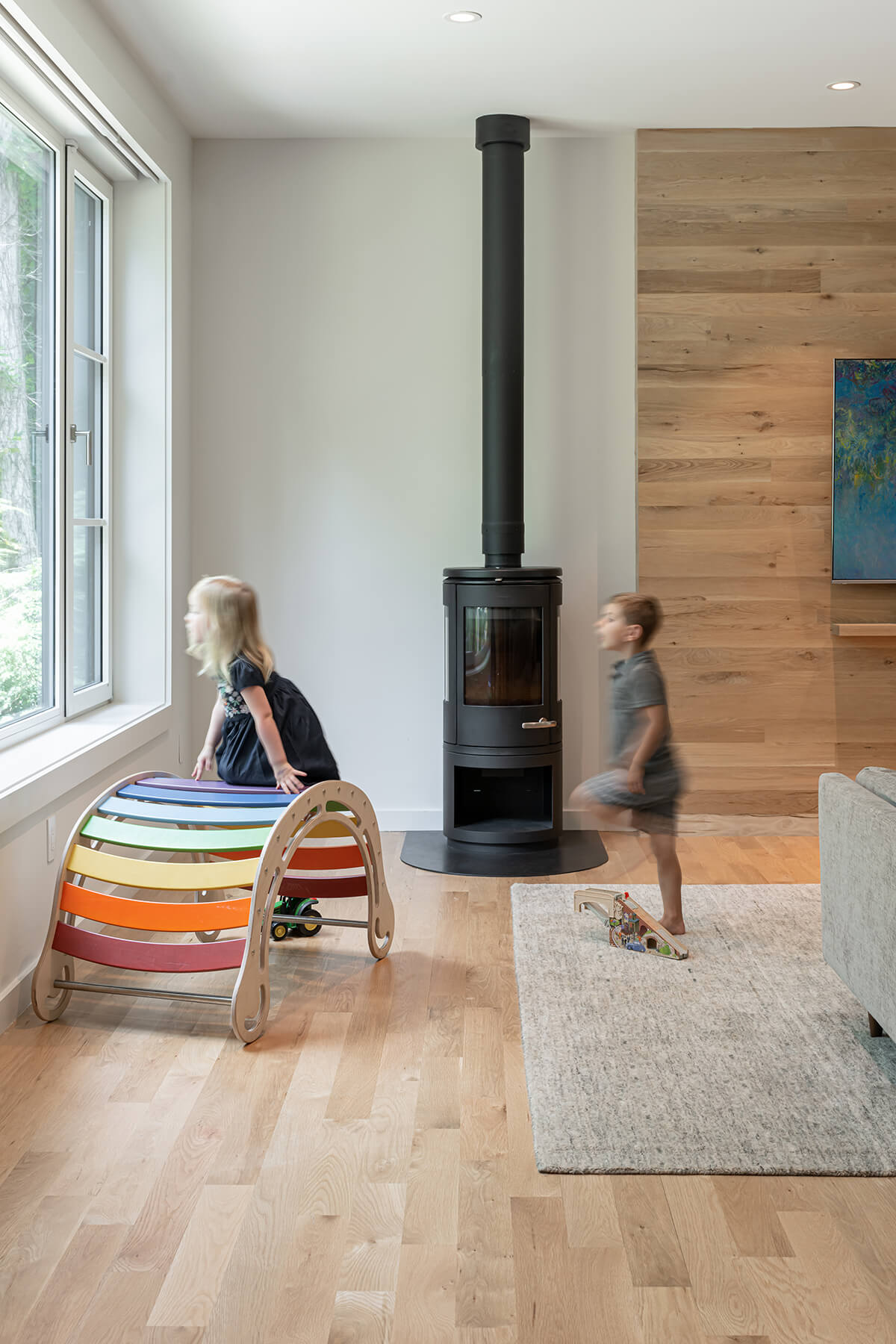



LEED Silver Certified Residence in Biltmore Forest, NC
The design and construction team employed several strategies to optimize the home’s energy performance. To prevent conditioned air from leaking out of the home, penetrations through the building envelope were kept to a minimum. All vents and exhausts were combined into a single outlet wherever possible, and a ventless clothes dryer was installed. Triple-glazed super-insulated windows are installed throughout the house. Since the demolished home already had a basement, this project was an ideal candidate for prefabricated Superior Walls that provide continuous external insulation and keep the basement warm. Above grade, the exterior walls were constructed with a continuous exterior rigid insulation ZIP panel system that keeps the house cool in the summer and warm in the winter. In addition to these energy-conserving measures, a 10.5-kW photovoltaic array was installed on the roof, in conjunction with a Tesla Powerwall residential energy storage system. The home has a HERS energy rating of 3, which means that it is more energy efficient than 97% of houses in the US. In super-energy-efficient homes like this one however, it is not unusual to see the actual energy usage at net-zero, due to the owners’ increased awareness of the home’s energy usage.
Biltmore Forest is characterized by heavily wooded, established forests that stretch across the home sites. Great care was taken to not only preserve the site’s wooded character, but to improve it. A dense hemlock forest shields the home site from the road, but it had been neglected and overrun with invasive English ivy. The landscape architects developed a plan to remove the invasive species and diseased trees from the site. New eastern hemlock trees replaced the removed trees, and a maintenance plan was implemented to safeguard the improved hemlock forest from the wooly adelgid, an insect that has ravaged 90% of the eastern hemlocks in North America.
The project team chose to design the new house and hardscape areas as close in footprint
to the previously constructed areas as possible. This approach allowed most of the existing trees
and native plantings on the site to remain. Preserving the most valuable trees gave the team some leeway to strategically remove trees for daylighting the interior while maintaining the site’s forest charm.
